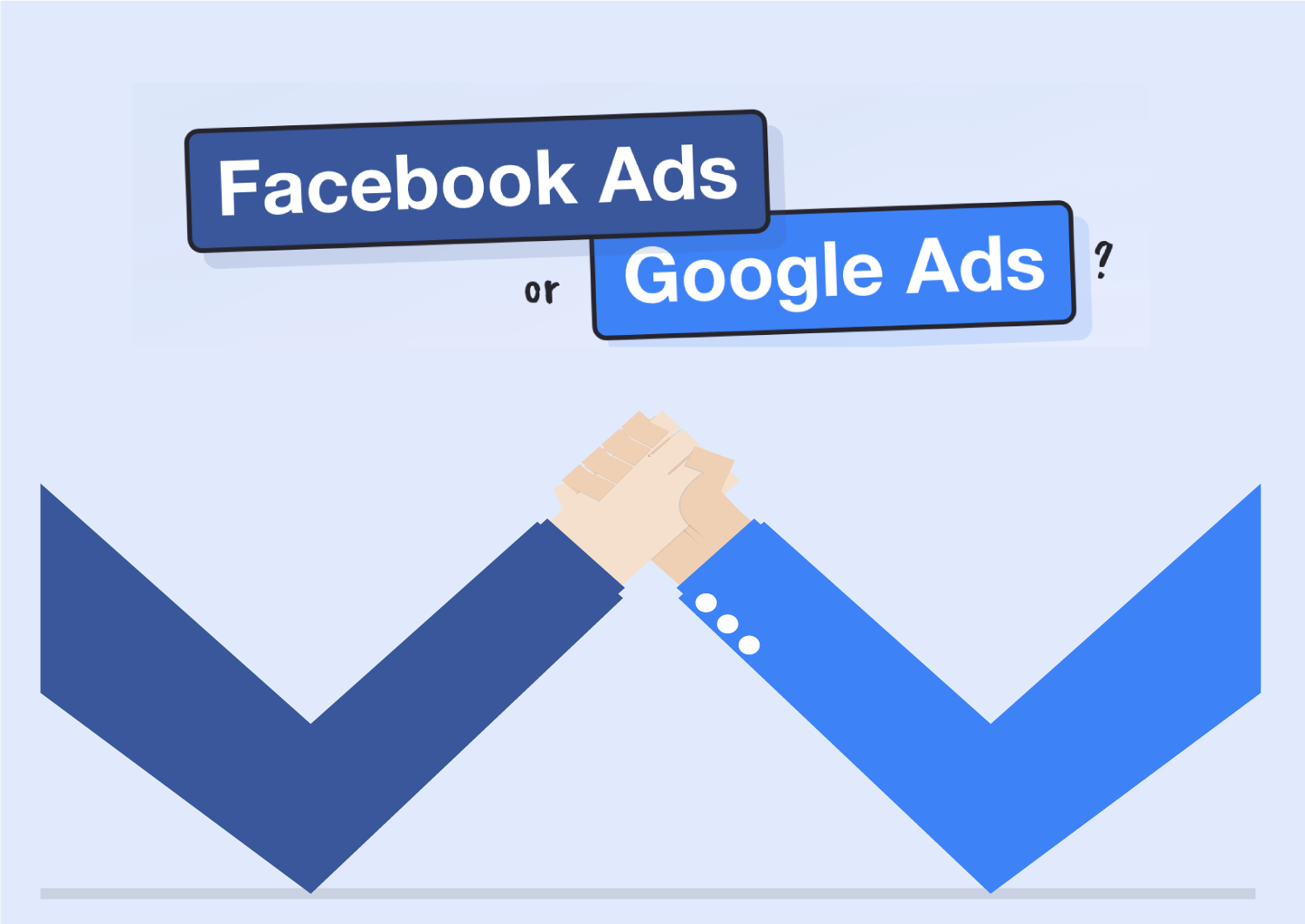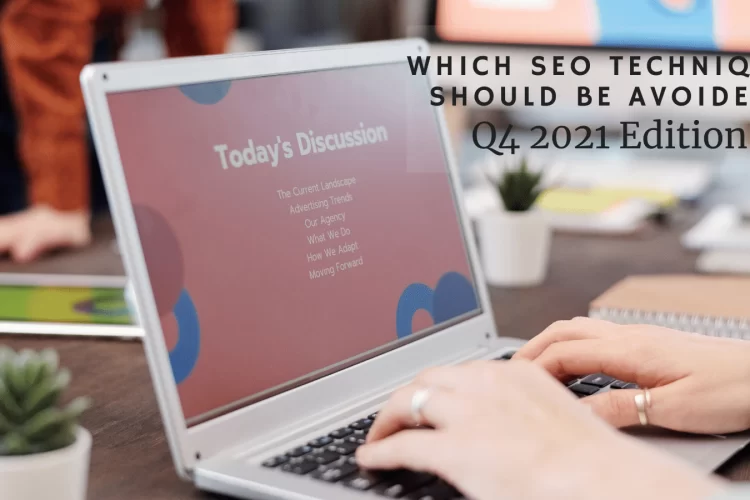
The Google Ads service is a paid online advertising platform provided by the search engine company. Originally called Google Adwords, it was rebranded as Google Ads in 2018.
The service works the same way: on search engine results pages (SERPs), users can find a paid advertisement targeted to their keyword.
There are all advertisements on top of the SERP, and they look nearly identical to organic search results except for the bolded “Ad” at the top of the post, which is good for the advertiser since the first results on Google typically get the vast majority of traffic, but it’s not assured that purchasing advertising on Google will guarantee you the top position.
In the end, you’ll likely compete with countless marketers for the same keyword through Google Ads. To figure out how they operate, let’s see how they work.
How Google Ads work
The Google Ads program operates under a pay-per-click (PPC) model. This means that advertisers target a specific keyword on Google and place bids on it – competing with others who are also targeting the same keyword.
The bid you make is your maximum bid – or the amount you’re willing to pay for an ad, For instance, if your maximum bid is $4 and Google figures your cost is $2, you will get that ad. In case the amount is higher than $4, you won’t receive the ad placement.
You can also set a maximum budget per day for your ad. This will ensure you won’t spend more than a certain amount daily, allowing you to plan your budget for your digital campaign.
The following three options are available to marketers:
1.Cost-per-click (CPC). How much you pay when a user clicks on your ad.
2.Cost-per-mille (CPM). How much you pay per 1000 ad impressions.
3.Cost-per-engagement (CPE). How much you pay when a user performs a specific action on your ad (signs up for a list, watch a video, etc).
A Quality Score may be used alongside the bid amount to assess the effectiveness of your ad. According to Google: “Quality Score is an estimate of the quality of your ads, keywords, and landing pages, Higher quality ads can result in lower prices and better ad positions” , The Quality Score number is between 1 and 10 – with 10 being the best score. The higher quality score you get, the better position you’ll rank and the less money you’ll spend on converting.
The Quality Score combined with your bid amount determines your Ad Rank – the position in the search results page your ad will appear.
As a result, when a user clicks on the ad and is charged a fee (pay per click), the marketer receives a small fee.
The idea is that the more users interact with an advertisement, the more likely they are to accomplish its goals (e.g. become a lead, make a purchase).
Now that you know how Google ads work, let’s take a look at the different types of Google ads you can use for your campaign.
Types of Google Ads
Google offers several different campaign types that you can use:
- Search campaign
- Display campaign
- Shopping campaign
- Video campaign
- App campaign
Now let’s look at each of these campaign types to see how they work-and which one you should select.
Search campaign
Search campaign ads appear in the results pages for the keyword as text ads.
You are probably familiar with these ads, which appear just below the URL on the search results page with a black “Ad” symbol next to it. But, as you can see, text ads aren’t the only type of ad in the Search Network, You are also able to have your ads appear in Google Shopping, And that brings us to…
How Do Facebook Ads Actually Work?
Do Facebook Ads really work? You can, here’s how you can set up your first campaign and everything you need to know.
We have to face the elephant in the room: Facebook ads are struggling. Facebook is fighting a lawsuit against their reach metrics. Facebook’s personalized ad campaign to combat Apple’s App Tracking Transparency (ATT) isn’t working, but the truth is that Facebook ads work.
Adding new features like exclusion controls and conversion APIs that let you pull data directly from your server into Ad Manager, and providing transparency about the data Facebook collects, this social network shows no signs of slowing down.
The social network doesn’t appear to be slowing down either with updates such as the removal of exclusion controls, the implementation of Conversions API that allows you to pull data directly from your server into Ads Manager, and transparency regarding the data Facebook collects.
In this article, I’ll explain how and why Facebook ads work, the different types of Facebook ads, and how to create your first Facebook ad.
So, Do Facebook Ads Really Work?
The short answer: Yes. Facebook ads do really work, Want proof? Throughout its 30 days of existence, this app generated 7,044 installs after spending $9,821 on Facebook advertising, BionicGym generated a 9x return on investment from Facebook advertising, and this company spent $300,774.82 on Facebook ads to earn $3.64 million in revenue.
If your business fits Facebook ads, you might want to determine if Facebook fits with your business model. Depending on your industry, you may want to consider the effectiveness of Facebook ads.
Facebook ads are not always the answer to more traffic, clients, or sales, If you’re a business with a low cost of entry for example an e-commerce site that pushes products or a service designed to sign-ups, it can be difficult to find success. If you’re unsure, start small. Spend $5-$10 per day on ads for 1-2 weeks to test.
A Quick Background of Facebook’s Ad Algorithm
In the beginning, Facebook’s ad algorithm was based on auctions. It gave priority to the highest bidder. However, in 2018, Mark Zuckerberg announced that Facebook would seek to prioritize “meaningful interactions.”
With the integration of the Facebook auction, Facebook has shifted its focus to user experience.
The auction is based on:
- Ad rank.
- Advertiser bid.
- Estimated action rates.
- Ad relevancy and quality.
The exact nature of Facebook’s ad algorithm, however, still remains a mystery. Eric Sodomka, a Facebook research scientist who specializes in auctions, discussed first-hand his insight into how Facebook works with advertisers.
On the left, you’ll see the probability that this specific user will click any ad.
You can see the probability of a specific user clicking this ad on the right side of this message. Facebook uses this predictive data to decide if someone will take an action. Because of Facebook’s flexible analytics architecture, they test various models outside of this.
For more information, you may want to take a peek at this research paper, Practical Lessons from Predicting Clicks on Ads at Facebook, by Joaquin Quinonero Candela, the Director of Applied Machine Learning at Facebook Research.




